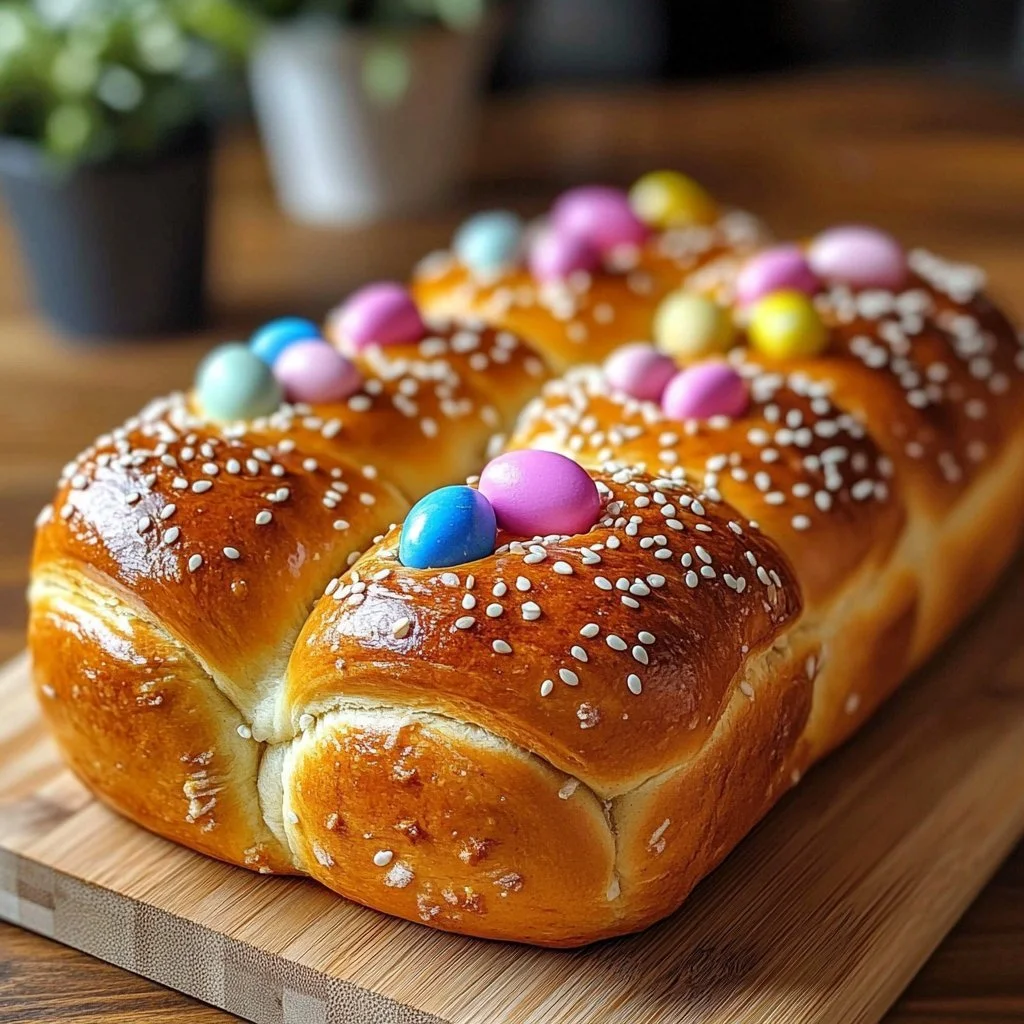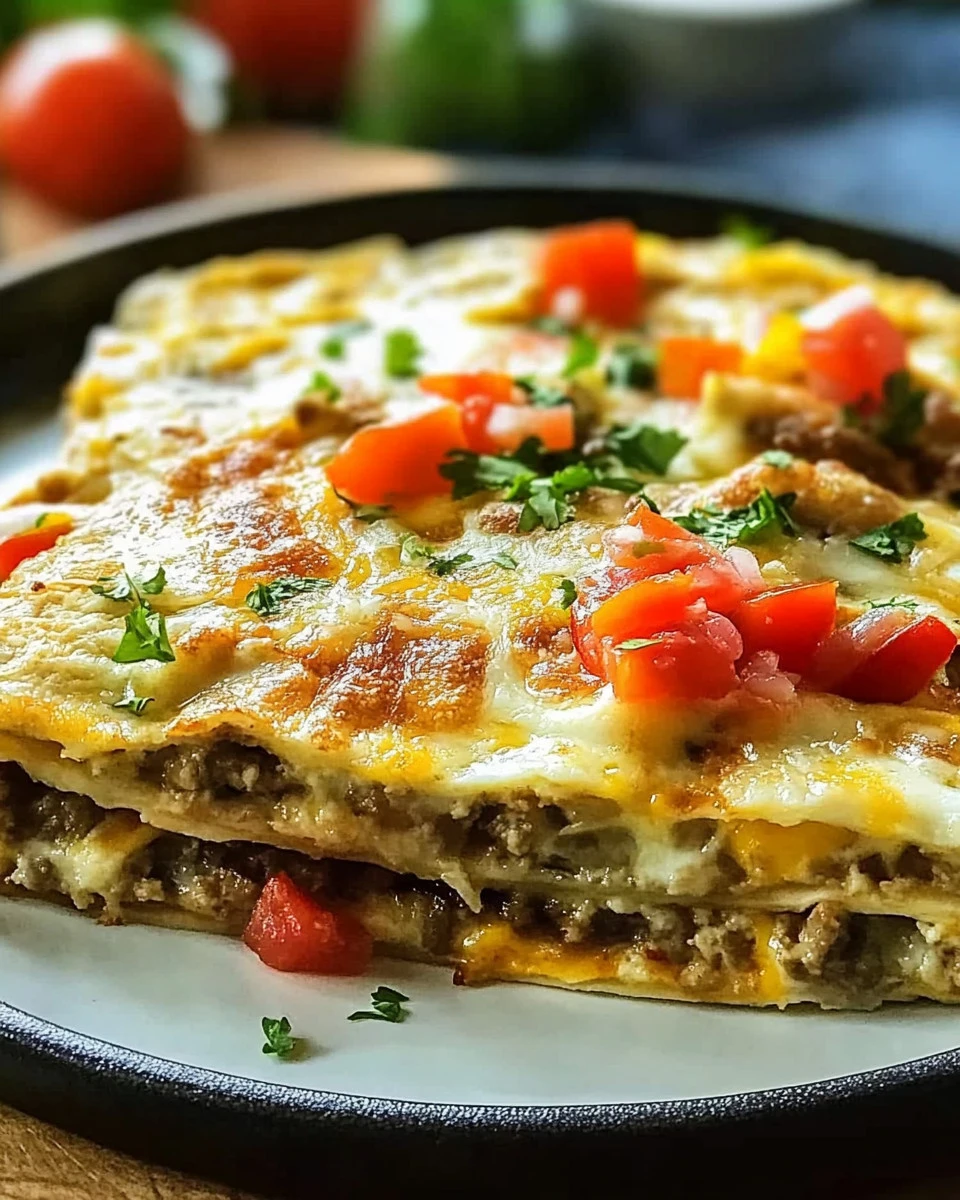Easter Bread
Easter Bread is a delightful and aromatic delicacy that brings warmth and joy to any festive gathering. This beautiful bread is not only a feast for the eyes with its braided design but also a heartwarming connection to family traditions. Soft, fluffy, and slightly sweet, this treat captures the essence of celebration and renewal. This step-by-step recipe ensures that even novice bakers can create the perfect loaf, making it a must-have on your holiday table.
Whether you’re hosting an Easter brunch or simply wishing to enjoy something special, this Easter Bread will surely make your gathering memorable. It’s worth making not just for its delicious flavor but also for the cherished memories waiting to be made as you knead and braid the dough together with loved ones.
Why You’ll Love This Recipe
This Easter Bread recipe is perfect for bakers of all skill levels. Firstly, it features easy prep steps that keep it simple and family-friendly. Whether you’re preparing a traditional feast or looking for a quick addition to your meal, this recipe strikes the right balance with minimal ingredients that pack maximum flavor. Furthermore, it provides an excellent opportunity for family bonding as you can involve everyone in the fun process of bread-making.
The blend of fluffy dough flavored with vanilla and lemon zest creates an irresistible aroma, making it a highlight of your dining experience. Once out of the oven, the enticing golden-brown crust and soft interior will have everyone asking for a second slice!
Ingredients for Easter Bread
- 4 cups all-purpose flour: Light and airy, perfect for yielding a soft bread.
- 2 1/4 tsp instant yeast: This will give your bread a wonderful rise and fluffy texture.
- 1/2 cup sugar: Adds a touch of sweetness that balances the flavors beautifully.
- 1 cup whole milk: Rich and creamy, it makes the dough tender.
- 1/2 cup unsalted butter, melted: Infuses the bread with richness and a lovely flavor.
- 3 large eggs: These add moisture and help bind the ingredients together.
- 2 tsp vanilla extract: For that wonderful aromatic quality.
- Zest of 1 lemon: Brightens the flavors with its citrusy fragrance.
- 1 tsp salt: Enhances the overall taste of the bread.
- Sesame seeds (optional): A lovely garnish that adds a touch of crunch.
Step-by-Step Directions for Easter Bread
In a large bowl, combine the warm milk, instant yeast, and sugar. Let the mixture sit for 5-10 minutes until bubbly. This step activates the yeast and is crucial for achieving a fluffy bread.
Gradually whisk in the flour and salt until you no longer see any dry spots. This will create the base of your dough.
Incorporate the melted butter, eggs, vanilla extract, and lemon zest until the mixture is smooth and cohesive. This combination adds delightful flavors that elevate your bread.
Knead the dough on a floured surface for 8-10 minutes until it is smooth and elastic. This process develops the gluten, which helps give the bread its perfect texture.
Place the dough in a greased bowl, cover it with a clean towel, and let it rise until doubled in size, approximately 1-2 hours. A warm, draft-free place is ideal for this step.
Once risen, punch down the dough to release any air bubbles. Divide it into three equal strands and braid them carefully. This creates the beautiful braided shape characteristic of Easter Bread.
Place the braided loaf onto a lined baking sheet, cover it, and let it rise for another 30 minutes. This second rise will help make the bread airy and light.
Preheat your oven to 350°F (175°C) and bake the bread for 25-30 minutes until it turns golden brown and sounds hollow when tapped. Let it cool before slicing to allow the flavors to settle.
Tips & Tricks
To ensure your Easter Bread turns out perfectly each time, here are a few chef’s secrets:
Proper Yeast Activation: Make sure your milk is warm (not hot) when combining with yeast, as excessive heat can kill the yeast and prevent rising.
Kneading Technique: Use the heel of your hand to push the dough down and forward while kneading. Don’t rush this step; it develops the gluten and improves texture.
Optional Additions: Feel free to add raisins or chopped dried fruits for a sweet touch or sprinkle with sesame seeds for added texture.
Flavor Boosters: A pinch of nutmeg or cinnamon can be introduced into the dough for a subtle yet delightful flavor twist.
Serving Suggestions & Pairings
Easter Bread pairs perfectly with a variety of dishes. Slice it for an Easter brunch alongside scrambled eggs, fresh fruit, or a creamy cheese spread. You can also toast slices lightly and serve with butter and a drizzle of honey for breakfast. For dessert, consider presenting it with a side of seasonal berries or a light lemon glaze that enhances its flavor.
Creative ideas for presenting this festive bread include placing it on a decorative platter surrounded by colorful spring flowers, matching the joyous occasion.
Nutritional Information
While indulging in Easter Bread, it’s essential to understand its nutritional values. Each slice typically contains around 210 calories, with a good balance of carbohydrates and fats. The inclusion of eggs and milk gives you protein, while the sugar level is moderate.
Remember, it’s a festive indulgence, so enjoy it in moderation, especially if you’re sharing with family and friends.
Storing Tips & Variations for Easter Bread
If you plan to make Easter Bread ahead of time, freezing is a great option. Allow the bread to cool completely, then wrap it tightly in plastic wrap and place it in an airtight freezer bag. It can be frozen for up to 3 months. To enjoy it again, simply thaw at room temperature and reheat in the oven for a few minutes to regain its warmth.
For variations, consider using alternative flours such as whole wheat or spelt for a healthier twist. You can also experiment with flavorings, adding spices, or incorporating chocolate chips for a decadent dessert version.
Conclusion for Easter Bread
Easter Bread is a beloved tradition worth embracing year after year. Its soft, sweet texture and lovely aroma will truly elevate your family gatherings. Everyone will appreciate the effort that goes into making something so special. Try this recipe today, and create heartwarming memories over this delicious bread!
FAQs
Can I use active dry yeast instead of instant yeast?
Yes, you can use active dry yeast, but you’ll need to activate it in warm milk with sugar for about 5-10 minutes before incorporating it into your dough.
How can I tell when the bread is done baking?
The Easter Bread is done when it is a golden brown color and sounds hollow when tapped on the bottom. An instant-read thermometer should read about 190°F (88°C) inside.
Can I add other ingredients like nuts or dried fruit?
Absolutely! Feel free to enhance the recipe by adding nuts, raisins, or dried fruit, but be mindful of the balance in moisture in your dough.
How long can I keep the Easter Bread?
Homemade Easter Bread can last at room temperature for about 3-4 days when stored in an airtight container. For longer storage, freeze it as mentioned above.
What can I make with leftover Easter Bread?
Leftover Easter Bread can be turned into delightful french toast or bread pudding, giving it a new life and flavor profile!
PrintEaster Bread
A delightful and aromatic delicacy with a braided design, perfect for festive gatherings.
- Prep Time: 15 minutes
- Cook Time: 30 minutes
- Total Time: 45 minutes
- Yield: 10 servings 1x
- Category: Bread
- Method: Baking
- Cuisine: Various
- Diet: Vegetarian
Ingredients
- 4 cups all-purpose flour
- 2 1/4 tsp instant yeast
- 1/2 cup sugar
- 1 cup whole milk
- 1/2 cup unsalted butter, melted
- 3 large eggs
- 2 tsp vanilla extract
- Zest of 1 lemon
- 1 tsp salt
- Sesame seeds (optional)
Instructions
- In a large bowl, combine the warm milk, instant yeast, and sugar. Let sit for 5-10 minutes until bubbly.
- Gradually whisk in the flour and salt until there are no dry spots.
- Incorporate the melted butter, eggs, vanilla extract, and lemon zest until smooth.
- Knead the dough on a floured surface for 8-10 minutes until smooth and elastic.
- Place in a greased bowl, cover with a towel, and let rise for 1-2 hours until doubled in size.
- Punch down the dough, divide into three strands, and braid.
- Place on a lined baking sheet, cover, and let rise for another 30 minutes.
- Preheat oven to 350°F (175°C) and bake for 25-30 minutes until golden brown and hollow-sounding when tapped.
- Let cool before slicing.
Notes
For best results, ensure the yeast is properly activated and consider adding dried fruit for extra flavor.
Nutrition
- Serving Size: 1 serving
- Calories: 210
- Sugar: 5g
- Sodium: 200mg
- Fat: 8g
- Saturated Fat: 4g
- Unsaturated Fat: 4g
- Trans Fat: 0g
- Carbohydrates: 30g
- Fiber: 1g
- Protein: 5g
- Cholesterol: 35mg







